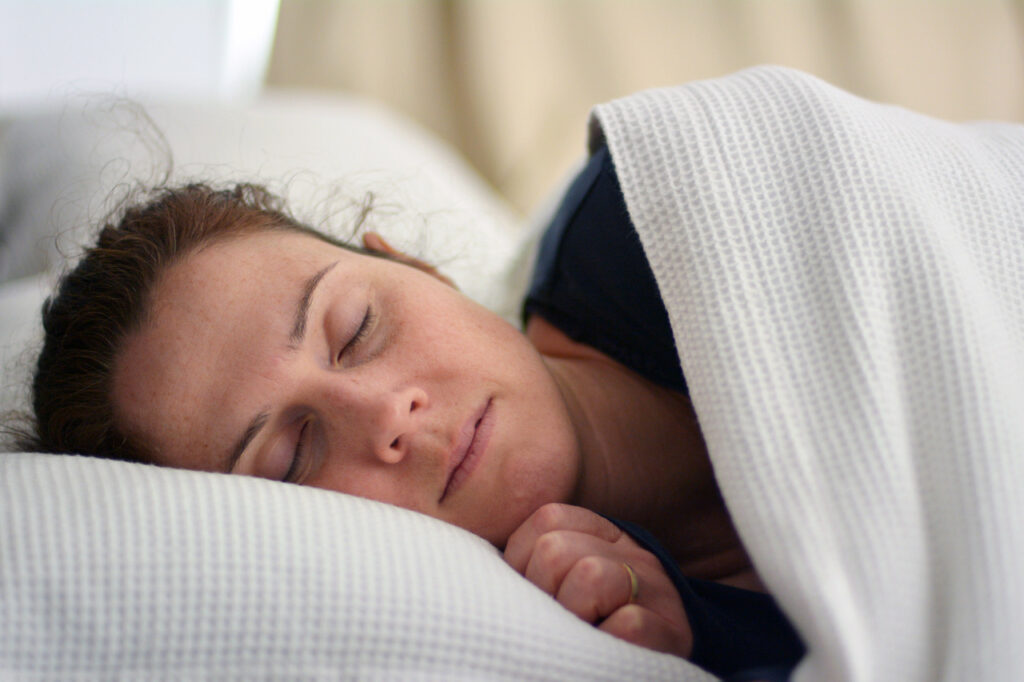Is sleep apnea in women underdiagnosed and undertreated?

Men and women reacting differently to the same situation isn’t news. But men and women reacting differently to the same medical condition?
A recent article in Forbes suggests that may be true—that obstructive sleep apnea (OSA) affects women differently, and that women are underdiagnosed and undertreated for OSA compared with men.1
Why is this so?
Christine Won, MD, director of the Women’s Sleep Health Program at Yale Medicine, determined the sex differences in OSA are due to 2 factors1:
Women are more likely to have sleep apnea during rapid eye movement (REM) sleep than non-REM (NREM) sleep. “Since REM sleep is on average about 20% of our sleep duration,” Dr Won said, “this may mean women have less total number of apneas during the entire night. But during REM sleep, the apneas tend to be more severe, meaning longer and associated with significant drops in oxygen level.”1
Women may be more prone to upper airway resistance syndrome. “In this disorder (which is disruptive but less severe than sleep apnea), women still have snoring and collapsible airways, but they do not have frank apneas (a respiratory event where breathing has completely ceased) and do not have oxygen level drops,” Dr Won continued. “Airway resistance still leads to awakenings and sleep fragmentation.”1
Dr Won noted another key difference between men and women with sleep apnea: women are more likely than men to wake up from apneas and suffer greater sleep disturbance.1
Dr Won also reasoned that women are diagnosed with sleep apnea significantly less often than men are because of the way the disease is defined.1 “Obstructive sleep apnea is diagnosed if you have, on average, more than 5 events per hour of sleep. Women may be less likely to have sleep apnea during NREM sleep but have just as much sleep apnea during REM sleep as men.”1 As mentioned above, REM sleep makes up only 20% of total sleep time, so the average number of events per hour is going to be less in women than men (leading to fewer diagnoses).
“Therefore, even though women may have less sleep apnea events across the entire duration of sleep, since they appear to have just as many sleep apnea events during REM sleep, women may be just as susceptible as men” according to Dr Won, “to the ill effects of sleep apnea.”1
And what are those ill effects? Sleep apnea can increase the risk of asthma, atrial fibrillation, cancers, chronic kidney disease, cognitive and behavioral disorders, diseases of the heart and blood vessels (heart attack, heart failure, high blood pressure, and stroke), eye disorders, metabolic conditions, and even pregnancy complications.1
Some of the OSA risk factors for women are also different from those for men. While obesity may affect both populations, hormone status is a key risk factor for women. “Women’s risk of sleep apnea increases markedly after menopause,” Dr Won said. “Female hormones may be protecting women from the NREM sleep apnea that occurs more normally in men.”1
Finally, OSA symptoms can also be quite different in men and women. Snoring, gasping, and witnessed apneas are classic symptoms exhibited by men. “Women may also have these symptoms but are also more likely to present with less ‘classic’ symptoms such as insomnia, sleep fragmentation, depressed mood, fatigue, or morning headaches,” according to Dr Won.1
Underdiagnosis is a significant health threat for women. The Society for Women’s Health Research estimates that 1 out of every 5 women has sleep apnea—and the vast majority (9 out of 10) are unaware of their condition.1
The responsibility falls to physicians and clinicians to carefully screen patients for sleep apnea, referring patients to a sleep specialist when necessary. A sleep apnea diagnosis is generally based on medical history, a physical exam, and the results of a sleep study.1 Sleep studies can either be an overnight, observed, in-laboratory polysomnography study, or a home sleep test.2
“At-home sleep apnea testing is an easy, cost-effective way to figure out whether you’re having trouble breathing,” said Susheel P. Patil, MD, PhD, clinical director of the Johns Hopkins Sleep Medicine Program. “If you are being told that you snore, snort and gasp, if you have disrupted sleep or are sleepy during the day, and you are overweight or obese, an at-home sleep apnea test may be very appropriate. Talk with your clinical provider about your options,” Dr Patel said.3
REFERENCES
1
Groth L. Sleep apnea in women may be undertreated. Forbes. Updated June 29, 2021. https://www.forbes.com/health/body/sleep-apnea-symptoms-in-women/
2
Chahine E. At-home sleep tests and studies. Sleep Foundation. Updated May 6, 2021. https://www.sleepfoundation.org/at-home-sleep-tests
3
What to know about an at-home sleep test. Johns Hopkins Medicine. https://www.hopkinsmedicine.org/health/wellness-and-prevention/what-to-know-about-an-at-home-sleep-test
